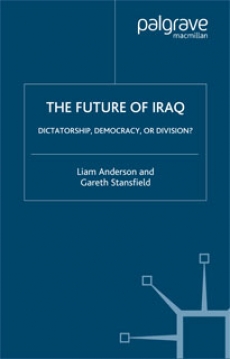| INTRODUCTION
“OPERATION IRAQI FREEDOM,” a U.S. and British military invasion of Iraq to remove from power the regime of Saddam Hussein, began on Wednesday, March 19, 2003. Barely three weeks later, coalition forces arrived at the gates of Baghdad to find that Saddam’s forces had simply melted away. The military phase of the conflict was over; what remained was the far more daunting challenge of occupying and reconstructing an Iraq that had been devastated by decades of sanctions and war.
Five months earlier, in mid-November 2002, support among the American people for “the use of force to overthrow the regime of Saddam Hussein” hovered around the 68 percent mark—down from a previous high point of 70 to 75 percent, but a respectable majority nonetheless. At the same time, a troubling survey conducted by National Geographic magazine revealed that only one in seven Americans aged 18 to 24 were able to locate Iraq on a map of the world. Intrigued, the British Daily Mirror newspaper dispatched a reporter to the streets of New York to investigate. The Mirror’s ad hoc poll of 100 New Yorkers yielded similar results; of the 100 polled, 80 “didn’t have a clue where Iraq was.”1 These included a New York cop who selected Austria as the new Iraq, and others who placed Iraq in France, Albania, northern Italy, and South Africa. One respondent, described as a “burly construction worker,” probably captured the sentiments of many with the words, “don’t know, don’t care, there’ll be nothing left of it soon anyway.”
No doubt similar results could have been obtained from any major Western city. However, that a significant majority of Americans supported overthrowing the regime of a person whose country they could not locate on a map is indicative of a deeper reality. Most Americans may have known little about Iraq the country, but they would almost certainly recognize the name of its former leader, Saddam Hussein. Demonizing the “Butcher of Baghdad” was scarcely a daunting challenge; there was ample ammunition to draw on; his
authorization of the repeated use of chemical weapons against the Iranians during the Iran–Iraq war of the 1980s; the gassing of his own countrymen—the Kurds of northern Iraq—at Halabja in 1988; the widespread use of torture and rape as instruments of political control; and so the list could go on. Lurid, though not necessarily reliable, accounts of life under Saddam’s regime penned by recent defectors merely added fuel to the fire. Personalizing a conflict through the demonizing of the target country’s leader has one great advantage: it makes conflict much easier to sell to a potentially skeptical public. The goal of military action becomes to rid the world of an evil dictator and to liberate his oppressed people. The target of such an attack is not the country itself, or its citizenry, but a single individual and his attendant regime. But the personalization of conflict has at least two important drawbacks. First, the demon himself must be caught before victory can be considered complete. Osama Bin Laden is still “wanted, dead or alive,” but until a dead body is produced, two thirds of the American people will not accept the war on terror as won. Second, and much more important, by focusing the public’s attention on a single individual, the implication is that his successful removal (and, or, destruction) is the major task at hand. The conflict with Iraq was always sold in these terms by the Bush Administration. Administration officials, most notably those in the Department of Defense, assumed that once freed from the oppressive yoke of dictatorship, the Iraqi people would embrace democracy and the associated pantheon of Western values and retake their rightful place within the community of civilized nations. Iraq is a democracy in waiting, lacking only the opportunity to express itself, or so the assumption goes. The truth of course, is somewhat more complex. The difficult part of the war against Iraq was never going to be military, few would have backed Iraq’s ramshackle army against history’s most powerful fighting force, but rather, political. The key question was not how to remove Saddam’s regime from power but what to put in its place.
| 